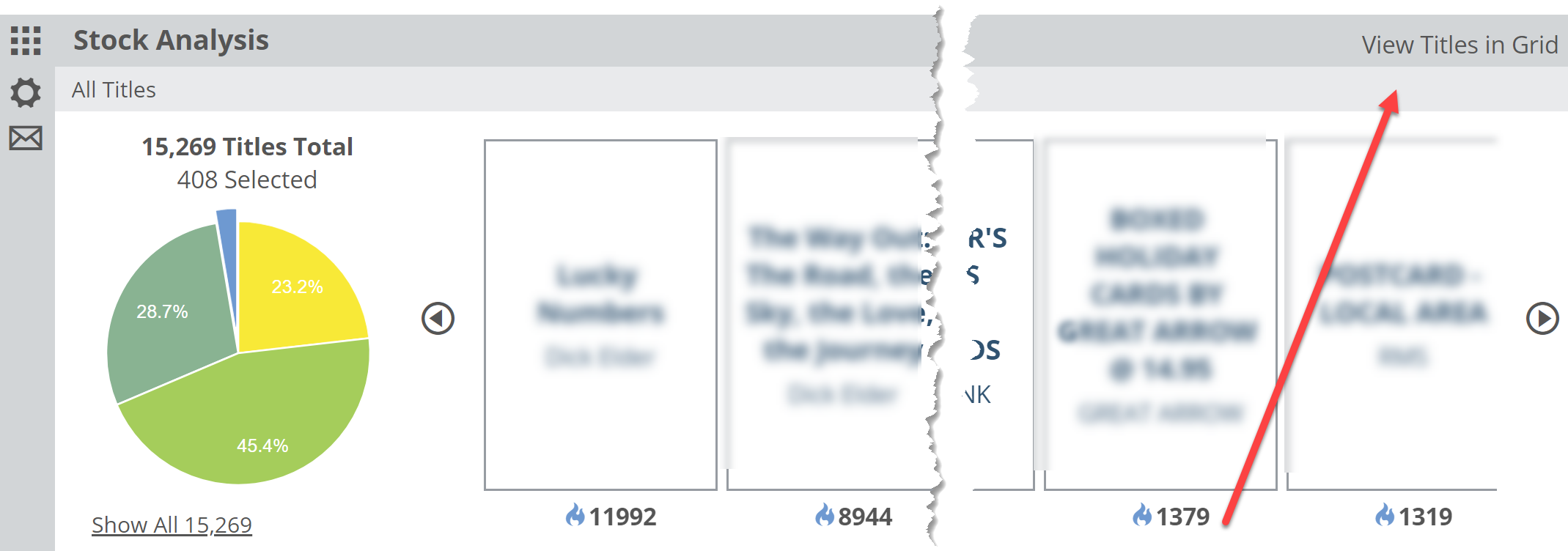The Stock Analysis graph is designed to show you overall performance of an account, or the chunk of your account that you’ve selected (between your parameters and Saved Filters). Note, only your own publishers’ titles show here.
The performance measurements are based on Shelf Days, of which you can get details here. Note that Shelf Days tends to give more weight to titles of which your account owns multiple copies. Basically, a stack of 12 copies of a title should sell pretty quickly to justify that expenditure.
This graph will most often be used to find your titles with which your account is doing the best and the ‘worst.’ The Best titles would be those that they’re selling at a brisk and profitable pace. The Worst performers are simply this titles that are not selling, and have not sold in quite some time. This measurement can be a great way to gauge the relative health of your account’s stock, or even just a portion of it.
So, to see those titles that could likely go away without your account’s customers even noticing, as sad as that may be, click in to that Cool/Stale (bright blue) portion of the graph. From there you can scroll through those titles or, more helpfully, click in to the Title Detail list.

From that list, you can create a spreadsheet you can use to create a return pull list for your account (and use the Top Sellers, or Not Yet Released graphs to add missing titles to a Collection, making it super easy for your accounts to replenish their stock with more relevant titles).
You can, and should, also use this information to see which titles really do the best for your account. You likely have a good idea, but it’s nice to have a precise idea. This helps you rep more intelligently for your customers. Indeed, helping your accounts stock the titles that their customers want is sort of the point of it all. Having titles they will want…they just don’t know it yet… is sort of the point too, of course. Such an endeavor is both noble and fraught with missteps. Reacting to those missteps to clear them out and fill that shelf space with something new is just simple good business.

